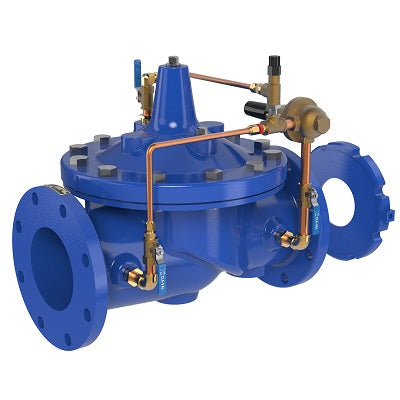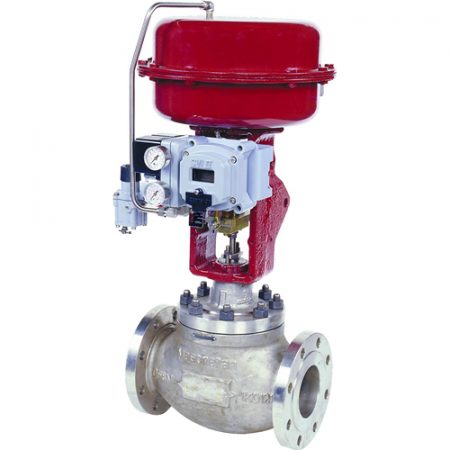Effective Control Valves: Trick Elements for Efficient System Administration
Effective Control Valves: Trick Elements for Efficient System Administration
Blog Article

Maximize Energy Financial Savings and Comfort With Advanced Structure Automation Controls
In the realm of contemporary style and facility administration, the combination of innovative building automation manages stands as a pivotal improvement. By using the power of automation, buildings can adjust, react, and develop in methods that were as soon as unimaginable.
Power Performance Advantages
Power performance benefits can considerably lower energy consumption and operational expenses in buildings. Energy-efficient systems, such as advanced structure automation controls, can maximize the use of resources like cooling, heating, and lights, leading to reduced power expenses over time.
Furthermore, enhanced power performance can extend the life-span of structure devices and systems. By running a lot more efficiently, heating and cooling systems, lighting fixture, and various other building components experience much less deterioration, resulting in reduced upkeep and substitute expenses. In addition, energy-efficient buildings typically regulate greater property worths and rental rates, supplying lasting economic benefits to proprietors.
Furthermore, power efficiency can improve occupant convenience and performance. Correctly managed indoor settings with optimal lights and thermal conditions produce a more helpful and enjoyable office, resulting in enhanced employee fulfillment and performance. Generally, the energy effectiveness advantages related to advanced building automation controls are complex, encompassing expense financial savings, ecological stewardship, and occupant wellness.
Boosted Convenience Control
Enhancing comfort control in structure atmospheres calls for a sophisticated assimilation of sophisticated automation systems for optimum passenger wellness. By using innovative structure automation controls, centers can tailor the indoor setting to fulfill the certain requirements and choices of residents. control valves.
By integrating these innovative controls, buildings can not just enhance comfort but additionally improve power efficiency by enhancing system operations based on actual tenancy and usage patterns. Eventually, focusing on resident comfort via innovative automation systems leads to a more delightful and much healthier indoor atmosphere.
Functional Efficiency Improvements

Moreover, the execution of real-time tracking and analytics devices allows structure drivers to identify energy inefficiencies and functional abnormalities promptly. By continually keeping an eye on power use patterns and system efficiency metrics, changes can be made in real-time to maximize energy consumption and make sure peak functional effectiveness. control valves. In addition, incorporating demand response methods into structure automation controls can better improve operational performance by dynamically changing power usage based on grid conditions and pricing signals
Indoor Environment Optimization
Reliable indoor climate optimization is an essential facet of structure automation controls, making certain passengers' convenience and wellness while making the most of energy savings. By utilizing innovative sensing units and controls, building automation systems can continually keep track of and change temperature, moisture degrees, air quality, and ventilation to produce an optimum indoor environment. Maintaining comfortable and constant conditions not only improves resident contentment yet likewise improves productivity and overall well-being.
Indoor environment optimization additionally plays a crucial function in power effectiveness. By fine-tuning air flow, cooling, and home heating systems based on real-time information and occupancy patterns, developing automation controls can considerably minimize power consumption - control valves. Carrying out strategies such as demand-controlled air flow and thermal zoning can assist minimize power waste while making sure that each location of the building receives the needed conditioning.

Sustainable Setting Production
Building automation manages not only maximize indoor climate problems for energy efficiency and occupant comfort however also lay the foundation for developing a lasting setting via critical management of systems and sources. By integrating advanced building automation modern technologies, such as sensing units, actuators, and intelligent software, centers can adjust and check energy usage in real-time to lessen waste and minimize their carbon impact. These systems allow anticipating upkeep, determining potential concerns prior to they escalate and enhancing tools efficiency to enhance long visit this website life and effectiveness.
Additionally, lasting atmosphere development extends beyond power monitoring to include water preservation, waste decrease, and interior air high quality renovation. Building automation controls can manage water usage, spot leakages, and guarantee correct waste disposal techniques, contributing to total sustainability efforts. Furthermore, by keeping an eye on and regulating ventilation and purification systems, these technologies boost occupant health and efficiency while decreasing energy usage related to cooling and heating procedures.
Conclusion
Finally, progressed building automation manages offer considerable benefits in terms of energy financial savings, comfort control, functional performance, interior environment optimization, and producing a sustainable atmosphere. By applying these controls, buildings can accomplish ideal efficiency while minimizing power consumption and enhancing passenger convenience. It is evident that the usage of advanced automation technology is vital in boosting structure efficiency and creating a much more lasting future.
Power performance advantages can significantly reduce energy intake and functional prices in structures. Overall, the energy efficiency advantages linked with innovative structure automation anonymous controls are complex, incorporating price financial savings, environmental stewardship, and passenger wellness.
In addition, including need response strategies right into structure automation controls can even more enhance functional efficiency by dynamically adjusting power usage based on grid conditions and rates signals.
Building automation controls not only optimize interior climate problems for power efficiency and owner comfort yet likewise lay the foundation for developing a sustainable environment via critical monitoring of systems and sources.In final thought, advanced structure Recommended Reading automation controls offer substantial benefits in terms of power cost savings, comfort control, functional efficiency, indoor climate optimization, and producing a lasting atmosphere.
Report this page